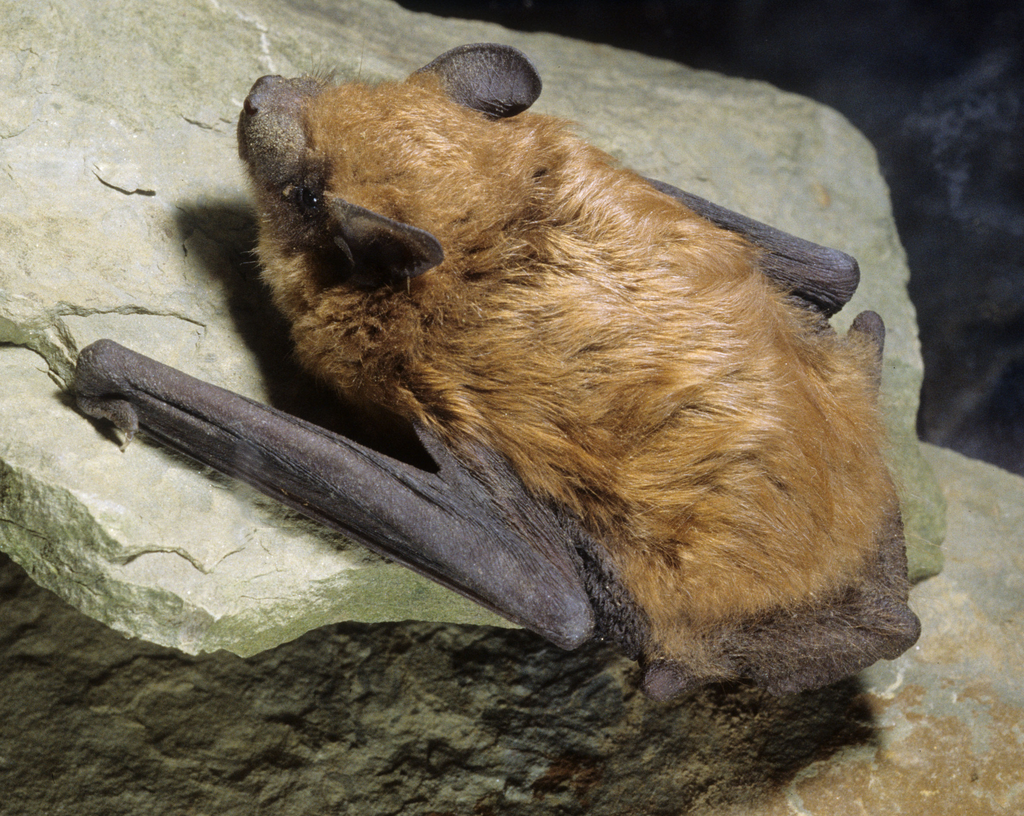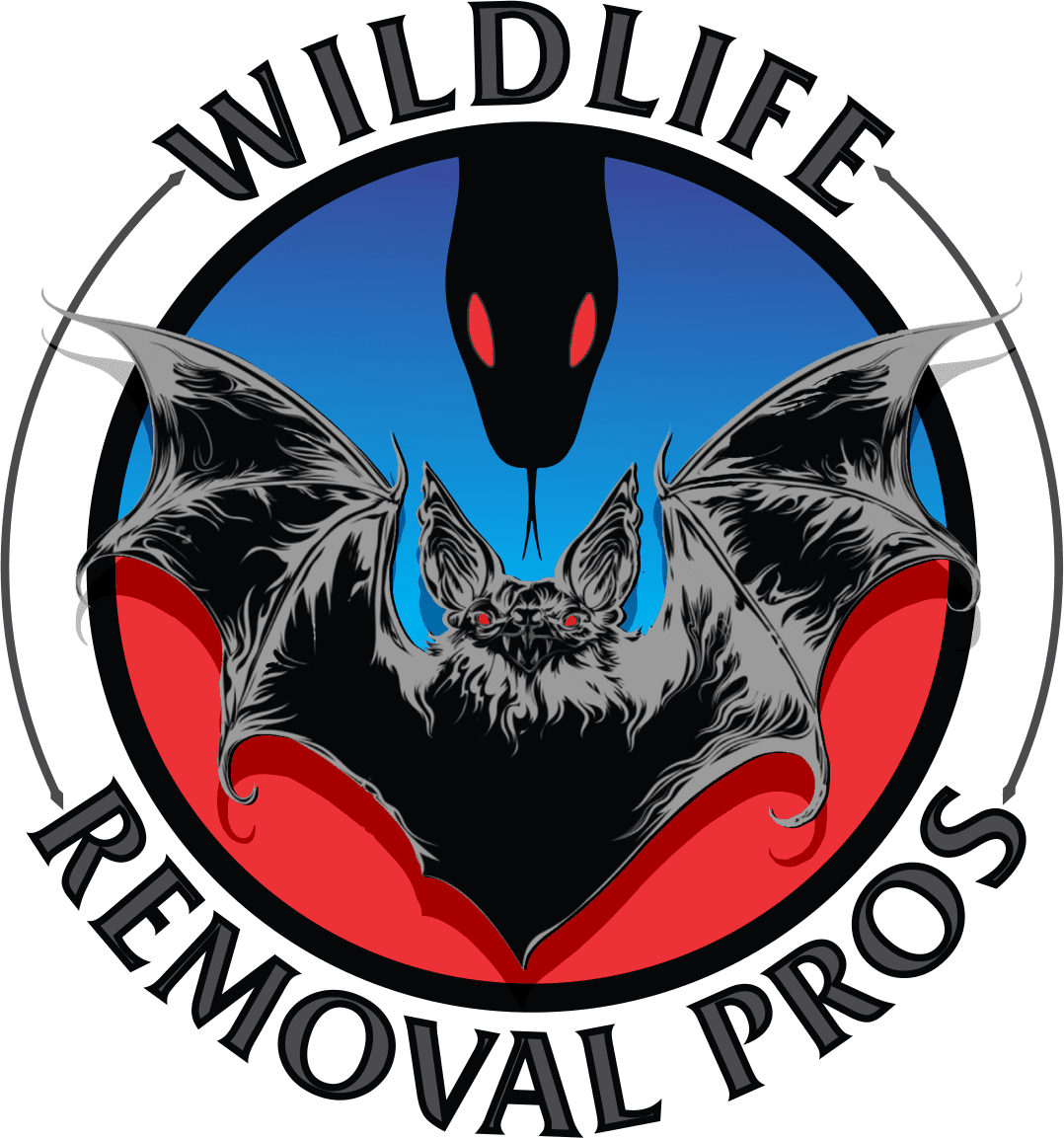Big Brown Bat (Eptesicus fuscus)

Key Takeaways
- Big Brown Bat has a robust body and double preposition wing structure.
- Echolocation is crucial for navigation and prey location.
- Some individuals migrate to warmer regions during winter.
- Habitat loss and disturbance during hibernation are threats to conservation.
Physical Features
The Big Brown Bat (Eptesicus Fuscus) is characterized by its robust body and distinctive double preposition wing structure. These physical features are essential for its behavior and adaptations, particularly in relation to its echolocation and navigation abilities.
Echolocation is a crucial aspect of the Big Brown Bat’s survival. By emitting high-frequency sounds, the bat can navigate and locate prey in complete darkness. It does this by emitting sound waves and listening to the echoes that bounce back from objects in its environment. The bat’s ears are highly sensitive to these echoes, allowing it to accurately determine the location, distance, and even the shape of objects around it.
The unique wing structure of the Big Brown Bat also plays a significant role in its behavior and adaptations. The double preposition wing structure allows for efficient flight and maneuverability. This adaptation enables the bat to quickly change direction, navigate through complex environments, and capture prey with precision.
Furthermore, the robust body of the Big Brown Bat provides stability and endurance during flight. Its strong muscles and sturdy frame allow for sustained flight over long distances, making it possible for the bat to migrate or explore new habitats in search of food.
Habitat and Range
The Big Brown Bat (Eptesicus Fuscus) inhabits a wide range of habitats throughout North America. These adaptable bats can be found in various environments, including forests, deserts, urban areas, and agricultural landscapes. They are known for their roosting and foraging behaviors, which contribute to their ability to thrive in diverse ecosystems.
Big Brown Bats are primarily nocturnal and roost in a variety of locations, such as caves, tree cavities, buildings, and bridges. They are capable of migrating, although their migration patterns are not well understood. Some individuals may move to warmer regions during the winter, while others may remain in their home range throughout the year.
The population dynamics of Big Brown Bats are influenced by several factors. One such factor is the availability of suitable roosting sites, which can impact the size and distribution of bat populations. Additionally, the availability of food resources, such as insects, plays a crucial role in their population dynamics. Changes in land use and the use of pesticides can have significant effects on the population size and health of Big Brown Bats.
Understanding the habitat preferences, migration patterns, and population dynamics of Big Brown Bats is essential for their conservation and management. Continued research and monitoring efforts are necessary to ensure the long-term survival of this species in North America.
Feeding and Diet
Big Brown Bats (Eptesicus fuscus) demonstrate a diverse diet, relying on their exceptional foraging abilities to capture a wide range of prey. These bats are considered opportunistic feeders, meaning they will consume whatever prey is readily available in their habitat. Their foraging behavior is primarily nocturnal, as they are active during the night when their preferred prey is also active.
Prey selection for Big Brown Bats depends on factors such as availability, abundance, and energy requirements. They have been observed to consume a variety of insects, including beetles, moths, flies, and mosquitoes. In fact, studies have shown that moths are a significant component of their diet, particularly during the summer months when moth populations are high.
The hunting technique employed by Big Brown Bats is known as aerial hawking. They fly in open areas, such as fields, forests, or near bodies of water, where they use echolocation to detect prey. Once a suitable target is identified, they swoop down and capture it using their sharp teeth and agile flight maneuvers.
Reproduction and Life Cycle
Big Brown Bats, specifically the species Eptesicus fuscus, exhibit a complex reproductive and life cycle. Mating behavior in Eptesicus fuscus typically occurs during the late summer and early fall. Males establish territories and use vocalizations and scent marking to attract females. Once a female is selected, mating takes place, usually in flight.
After mating, the female undergoes delayed fertilization, where sperm is stored in her reproductive tract until spring. In the spring, the female forms maternity colonies with other females, where they give birth to a single pup each year. The timing of birth coincides with the availability of food resources.
Parental care in Big Brown Bats is predominantly provided by the mother. She nurses her pup, producing milk that is high in fat and protein. The pup grows rapidly, reaching adult size within a few months. During this time, the mother leaves the pup in the roost while she forages for food.
As the pup grows, it gradually becomes more independent, learning to fly and hunt. By the end of the summer, the young bat is capable of surviving on its own. It may either join a colony or establish its own territory.
Conservation and Threats
Continuing from the previous subtopic, the conservation and threats surrounding the Big Brown Bat (Eptesicus fuscus) are of significant concern. As human activities continue to impact natural habitats and disrupt ecosystems, the conservation efforts for Big Brown Bats become crucial to ensure their survival.
Threats to Big Brown Bat conservation include habitat loss, pesticide use, and disturbance during hibernation. Human activities such as deforestation and urbanization contribute to the destruction of roosting sites and foraging areas, reducing the availability of suitable habitats for these bats. Pesticides used in agriculture can contaminate their food sources, leading to potential health issues. Lastly, disturbances during hibernation can disrupt their energy balance and cause them to burn critical fat reserves, leading to mortality.
To address these threats, various conservation efforts have been implemented. These include the creation and protection of bat habitats, such as bat boxes and artificial roosts, to compensate for the loss of natural roosting sites. Additionally, promoting sustainable agricultural practices and reducing pesticide use can help minimize the negative impacts on their food sources. Education and public awareness campaigns play a vital role in advocating for the protection of Big Brown Bats and their habitats.
The following table highlights some key threats and conservation efforts for Big Brown Bats:
| Threats to Conservation | Conservation Efforts |
|---|---|
| Habitat loss | Creation of bat habitats and protected areas |
| Pesticide use | Promotion of sustainable agricultural practices |
| Disturbance during hibernation | Education and public awareness campaigns |
Bat Species
Rafinesque’s big-eared bat (Corynorhinus rafinesquii)
Silver-haired bat (Lasionycteris noctivagans)
Seminole bat (Lasiurus seminolus)
Little brown bat (Myotis lucifugus)
Indiana bat (Myotis sodalis)
Virginia big-eared bat (Corynorhinus townsendii virginianus)
Red bat (Lasiurus borealis)
Gray bat (Myotis grisescens)
Eastern small-footed myotis (Myotis leibii)
Evening bat (Nycticeius humeralis)
Hoary bat (Lasiurus cinereus)
Southeastern myotis (Myotis austroriparius)
Northern bat (Myotis septentrionalis)
Eastern pipistrelle (Pipistrellus subflavus)
Bat Related Diseases
Histoplasmosis
Rabies
White-Nose Syndrome
Nuisance Bat Topics
Frequently Asked Questions
What do Big Brown Bats look like?
Big Brown Bats are considered “large” for an American bat, with brown to glossy copper-colored fur on their back and lighter fur on their belly. They have small, rounded, black ears and black wing membranes and tail. They weigh between ½ and ¾ of an ounce, and their wingspans range from 13 to 16 inches[5].
Where do Big Brown Bats live?
Big Brown Bats are found in almost all habitats, from deserts, meadows, cities, forests, mountains, and chaparral. They are most common in cities, towns, and rural areas, but are least commonly found in heavily forested regions[1][8]. Their range extends from the extreme northern parts of Canada through the United States, Mexico, Central America, northern South America, and the Caribbean Islands[1].
What is the behavior of Big Brown Bats?
Big Brown Bats are known for their hardiness and can withstand conditions that other bats can’t. They hibernate in caves, mines, walls, attics, or other buildings. Some may migrate short distances to find an appropriate location for hibernating[1]. They are more tolerant of cold than most species of bats, even surviving short periods of sub-zero temperatures[2].
What do Big Brown Bats eat?
Big Brown Bats are insectivorous, eating mostly beetles, but they will also eat other flying insects including moths, flies, wasps, and others. They use their strong teeth to chew through the hard outer shell of the insects. They play an important role in controlling garden, forest, and agricultural pests[3].
What is the conservation status of Big Brown Bats?
Despite their widespread distribution and abundance, little is known about their current status relative to past numbers. As fewer bats are permitted to live in buildings, even this ubiquitous species has declined in areas that have been closely monitored[3]. However, they are currently not of any special conservation concern[1]. Big Brown Bats can live up to 18-20 years in the wild, but most die during their first winter because they did not store enough fat to survive through their entire hibernation period[1].
Citations: [1] https://www.desertmuseum.org/kids/bats/Big%20Brown%20Bat.php [2] https://portal.ct.gov/-/media/DEEP/wildlife/pdf_files/outreach/fact_sheets/BigBrownBat.pdf [3] http://www.biokids.umich.edu/critters/Eptesicus_fuscus/ [4] https://dnr.illinois.gov/education/wildaboutpages/wildaboutwildmammals/wildaboutmammalsbats/wawmbigbrownbat.html [5] https://tpwd.texas.gov/huntwild/wild/species/bigbrown/ [6] https://www.nps.gov/shen/learn/nature/big-brown-bat.htm [7] http://naturemappingfoundation.org/natmap/facts/big_brown_bat_k6.html [8] https://www.batcon.org/bat/eptesicus-fuscus/

